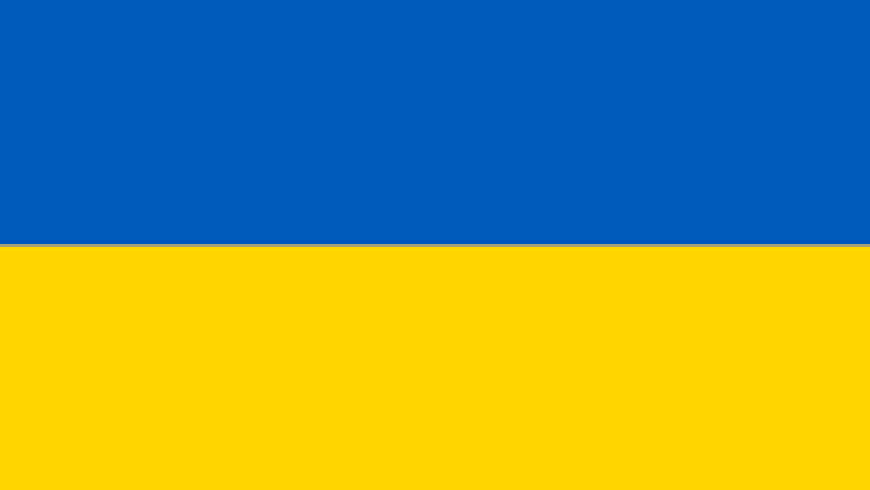
Ireland’s Ukrainian Response
HSE’s Data and Informatics Team Develop Award Winning Digital Health Questionnaire
The Health Identity Management Services (HIDS) team’s data transformation project
It’s been over a year since the war in Ukraine broke out and within a few months displaced citizens were fleeing war-torn villages, towns, cities and regions. The Temporary Protection Directive was passed at EU-level and was endorsed by Ireland last year to provide safe sanctuary for people arriving here. The HSE National Ukrainian health response planning and coordination group established 9 main workstreams, including the data and informatics workstream. The data and informatics workstream collaborated across clinical, operations and technical teams by leading the governance, digital health questionnaire development and data insights to enable and support decision making for the IT Leadership in a time of crisis.
Leaning into the expertise of the HIDS team
The Director of HIDS, Maria McCann, led the Data & Informatics workstream supported by EY (Program management partner) and Microsoft Global Disaster Recovery Team (Digital Solution Partner) to deliver a data and informatics response to support the HSEs planning and coordination group. The workstream worked with representatives from National Social Inclusion Office, Integrated Information Services (IIS), HSE Language translation team, Primary care, Community Operations, Operations team at National Transit centre at Citywest and the Health Intelligence Unit.
Key objectives of the programme:
- Map the journey of the displaced person and identify the data sources, data elements and enable standard process for governance to centralized information in the IIS data lake to send to end users.
- Collaborate with the National Social Inclusion office (clinical) and National Transit Centre Citywest Operations team (operations) to deliver reliable secure and scalable digital solution to capture the demographic and health service questionnaire medical information of the incoming displaced person. This was then shared with the displaced person in the language of their choice via email (Ukrainian or Russian) including the English translation for health care professionals to view when the
displaced person presented to them. - Provide up to date situational report and illustrate daily and weekly trends on key data elements from the digital solution for the health status questionnaire and triage information. Share this data to the Health Intelligence Unit for predictive modelling.
- Establish controls and processes to enable secure access to 120 users through interactive dashboards for information received from DEASP, DCEDIY, PCRS, COVAX.
- Perform due diligence to support data governance and Data Protection Impact Assessments for cross government and inter departmental data sharing through
IIS centralization.
6. The modelling highlighted accommodation stressors given the uneven geographical distribution of accommodation for Ukrainian citizens in Ireland; different health
needs and associated age brackets. In an evolving situation the data gives HSE departments and policy makers a snapshot in time. So essentially, informed decisions are being made based on the insights provided by the data.
The data challenge and opportunity
Ukrainian nationals were coming into Ireland through different airports and ports. This necessitated a system of data collection at the point of entry in order to ensure health information was acquired and urgency of care identified. The IT system built out ensured that demographic data (name, age, sex, passport identity etc.), along with a health questionnaire was collected immediately on entry at the Citywest Convention Centre designed as the official National Transit Centre (NTC) for beneficiaries of temporary protection. This centre was established so displaced people could receive their Temporary Permission letter, a PPSN as well as social welfare assessments, accommodation and avail of health services at NTC.
The Technology
Behind the scenes the back-end systems to support a large-scale, ever-changing movement of people – into and then around Ireland – was being built in an expedited manner. The HIDS team in collaboration with EY and Microsoft used the MS Dynamics 365 and power platforms to develop a health questionnaire form that captured the demographic and high level medical details of the displaced person. Once the details are filled in, the displaced person receives an acknowledgment email with a PDF that contains the information they completed in their language of choice and in English for health care professionals to read. It means people don’t have to continually repeat information which can be challenging in a different language. The data captured is then transformed to dashboards using Power BI for HSE personnel to use to support demand and capacity planning across the nation.
Crisis Leadership Award
For their work the HSE’s Ukraine Data and Informatics team was delighted to win the Crisis Leadership award at the CIO and IT Leaders Awards 2023 on March 30. Speaking after the awards ceremony Maria McCann said: ‘‘The team worked incredibly hard on this. It is an honour to be recognized. There was collaboration across multiple departments and organisations and I am grateful for the opportunity to work with such talented and committed individuals.’’

Learnings and Legacy
What we learned from this project, and how it will positively impact the health service in the future is three-fold.
1. Cross government and inter departmental operability:
In the time of crisis, utilization of information and learnings from all the touch points in the journey of an immigrant was the vital factor for success. Identity Management as a foundation is key, there are many lessons learned from this project that we will bring forward.
2. Good governance and data driven decisions:
Through this project secure sharing of information with appropriate governance and data driven decision making supported HSE colleagues.
3. Transparent and regular communication across workstreams:
Transparent communication with regular feedback and review from all stakeholders helped in prioritization of requirements and quick turnaround for a reliable and scalable solution. We are proud to have supported the frontline staff facing this crisis. The digital collection of data, insights provided and continued scaling of this project to open it up across the country is one that will continue to be built upon, by working closely with our operations and clinical stakeholders. The system is being scaled further again to support Ukrainian displaced people and people with International Protection status. We hope this system will support the engagement with the HSE for displaced people and our health care professionals in their response.
Contact: MariaC.McCann@hse
